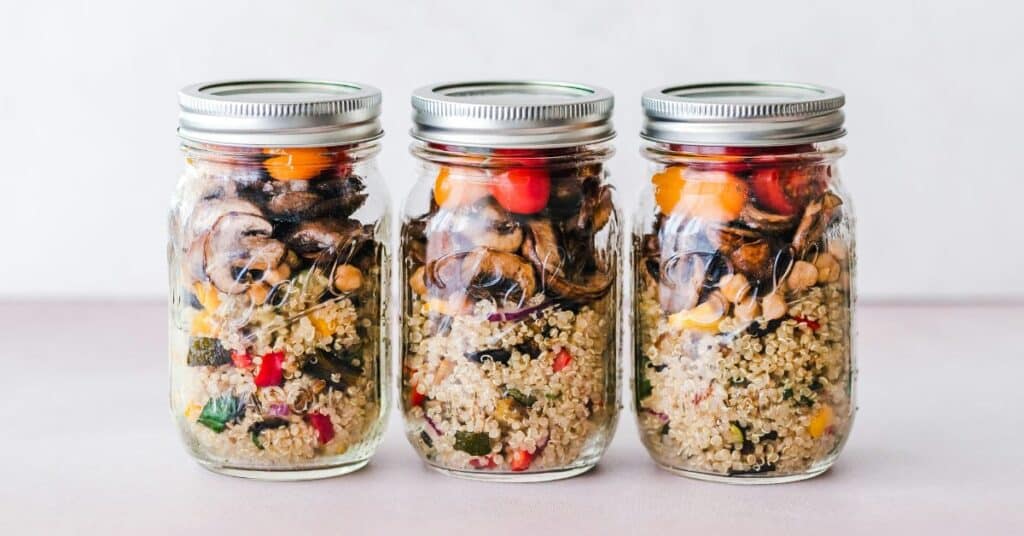Are you looking for a natural way to lower your insulin levels? Look no further than nature’s form of Ozempic. Here’s how to lower insulin quickly with diet and experience the powerful effects of making dietary changes to improve your health.

Understanding Insulin and Its Impact on Your Health
Insulin is a vital hormone secreted by the pancreas, playing a critical role in how the body processes blood sugar, or glucose. It allows cells to take in glucose to be used for energy or stored for future use. (1) However, when the body’s insulin levels are persistently high, it can set the stage for various metabolic issues. This condition, known as hyperinsulinemia, can be a precursor to serious health complications, including type 2 diabetes, obesity, and cardiovascular disease. (2) Elevated insulin levels are often a response to insulin resistance, where the body’s cells become less responsive to the hormone, requiring more insulin to be produced to achieve the same effect. This imbalance can disturb the body’s metabolic harmony and lead to chronic health conditions. Thus, understanding the intricacies of insulin’s function and its effects on the body is the first step toward recognizing the importance of managing insulin levels for long-term health and vitality. Through mindful lifestyle and dietary choices, individuals can influence their insulin sensitivity and foster an environment within their body that supports metabolic health and reduces the risk of insulin-related diseases.

The Power of Dietary Changes to Lower Insulin Levels Quickly
Adopting a diet that emphasizes whole, unprocessed foods is a cornerstone strategy for naturally lowering insulin levels. This approach centers on the quality of the food we consume, prioritizing items that are minimally processed and rich in nutrients. By integrating an abundance of fresh fruits, vegetables, whole grains, and lean proteins into daily meals, individuals can directly influence their body’s insulin response. (3) These foods support a balanced blood sugar level by providing a steady source of energy, without the sharp spikes associated with highly processed foods and those high in refined sugars and unhealthy fats.
It’s not only about what to include but also what to reduce or eliminate. Cutting down on sugary beverages, sweets, and refined carbohydrates can drastically diminish the risk of insulin spikes. Instead, focusing on foods with a low glycemic index can promote a more gradual increase in blood glucose and insulin levels, aiding in better long-term management of insulin sensitivity. Check out my blog on the glycemic index for more information on this diet intervention.

Fiber-Rich Foods: Your Secret Weapon for Insulin Resistance
In the quest to lower insulin levels naturally, fiber-rich foods emerge as a critical ally. (4) Integral to a diet aimed at enhancing metabolic health, these foods have a unique ability to modulate the body’s glycemic response. Including a variety of fiber sources such as fruits, vegetables, whole grains, and legumes in your meals can significantly aid in the gradual absorption of glucose. This process is vital for preventing abrupt insulin spikes and facilitating a more stable blood sugar level throughout the day.
The benefits of fiber extend beyond just controlling insulin. It also plays a role in satiety, helping to curb appetite and potentially reduce overall calorie intake, which is beneficial for weight management. Weight management, specifically reduction of central adiposity (aka the belly) is closely linked with improved insulin sensitivity, as excessive weight can contribute to insulin resistance.
Moreover, certain types of fiber serve as prebiotics, feeding the beneficial bacteria in the gut. A healthy gut microbiome has been associated with better insulin sensitivity and a lower risk of metabolic diseases. Thus, integrating fiber-rich foods into your diet not only supports insulin regulation but also fortifies gut health, creating a multifaceted approach to improving metabolic outcomes.

The Role of Antioxidants in Insulin Management
Antioxidants play a pivotal role in combating oxidative stress, a condition that can exacerbate insulin resistance and impair the body’s ability to manage blood sugar effectively. These naturally occurring compounds, abundant in foods like dark chocolate, red grapes, and green tea, can neutralize free radicals and reduce inflammation, fostering a more insulin-sensitive environment. By integrating antioxidant-rich sources into one’s diet, individuals not only bolster their body’s defenses against oxidative stress but also support the delicate balance of insulin levels.
It’s essential to recognize that antioxidants go beyond merely countering oxidative damage; they also contribute to a holistic approach toward metabolic health. The inclusion of vibrant fruits, vegetables, and whole grains rich in these powerful compounds can aid in moderating the body’s insulin response to dietary sugars. Furthermore, by mitigating the impact of oxidative stress and inflammation, antioxidants can play a significant role in preventing the progression of insulin resistance into more severe metabolic disorders.

Healthy Fats and Their Impact on Insulin Sensitivity
Integrating healthy fats into one’s diet is an often overlooked yet critical component of managing insulin sensitivity. These beneficial fats, prominent in foods such as avocados, nuts, seeds, olive oil, and fatty fish like salmon, play a significant role in enhancing the body’s ability to regulate blood sugar levels effectively. Unlike trans fats and saturated fats, which can contribute to insulin resistance, these monounsaturated and polyunsaturated fats have the opposite effect, promoting insulin sensitivity.
Consumption of these fats aids in the slow release of glucose into the bloodstream, thereby preventing sudden spikes in insulin. This gradual process is crucial for maintaining steady blood sugar levels throughout the day. Furthermore, healthy fats are essential for absorbing fat-soluble vitamins and providing essential fatty acids, which are pivotal for overall health.
Including a moderate amount of healthy fats in every meal can also increase satiety, reducing the likelihood of overeating and assisting in weight management efforts. Given that excess weight is a known factor in developing insulin resistance, maintaining a healthy weight through diet, including the strategic use of healthy fats, can be instrumental in quickly and naturally lowering insulin.

Physical Activity: A Natural Booster for Insulin Sensitivity
Engaging in consistent physical activity emerges as a formidable ally in the quest to enhance insulin sensitivity. The body’s response to insulin is markedly improved through exercise, paving the way for more efficient glucose management. This positive effect is achieved by stimulating the muscles to utilize glucose for energy, thereby reducing blood sugar levels and necessitating less insulin to accomplish the same task. To harness the full spectrum of benefits, incorporating a mix of aerobic exercises, such as walking, cycling, or swimming, with strength training exercises is advisable. This balanced approach ensures that muscles are not only using glucose more efficiently during physical activity but also increasing their capacity to do so even at rest. By making physical activity a regular part of your routine, you’re not just improving insulin sensitivity; you’re also taking significant strides toward enhancing overall health and well-being. Just start by taking a 15-minute walk after meals or stand and do the dishes after dinner or even sweep and vacuum the floors. All movement counts and can help lower insulin levels more quickly!

The Importance of Consistency and Patience
Embarking on a journey to learn how to lower insulin levels quickly and naturally is a commitment to gradual and lasting change. It’s essential to approach this process with a mindset geared towards enduring progress rather than immediate results. Small, incremental shifts in your dietary habits and lifestyle choices can cumulatively yield significant benefits for insulin sensitivity and overall metabolic health. This path requires patience, as the body needs time to adapt and respond to these healthier patterns of eating and physical activity. Consistency in applying these changes day after day is the foundation upon which improved insulin management is built. It’s also vital to stay adaptable and open to adjusting your strategies as needed, based on how your body responds. Remember, the goal is not only to lower insulin levels but also to enhance your well-being and quality of life in the long term. Stay the course, and you will gradually witness the transformative power of a sustained commitment to your health.
If you need help managing insulin levels and specific guidance on how to lower your insulin levels quickly, you should seek support from a registered dietitian who can create a personalized plan to meet your lifestyle and needs. I encourage you to contact me here or book a free consultation here to discuss your current situation and goals, and how we can meet them.

